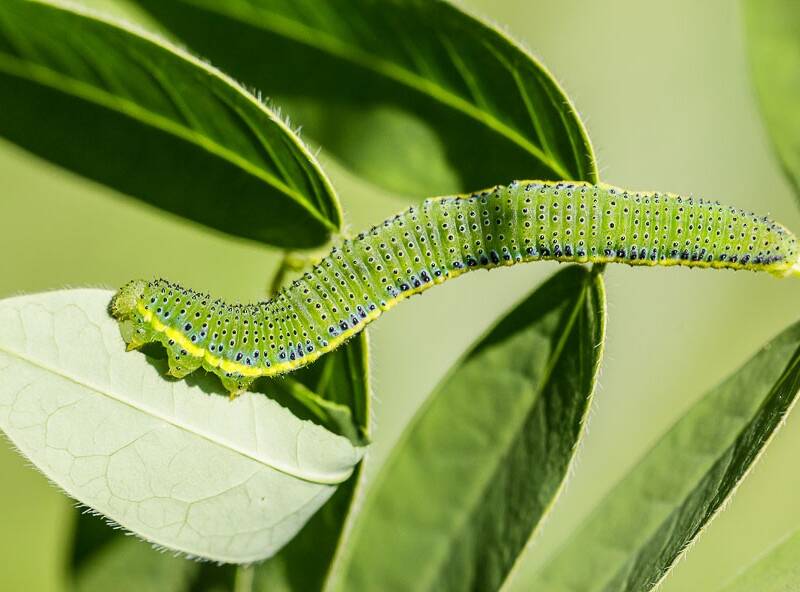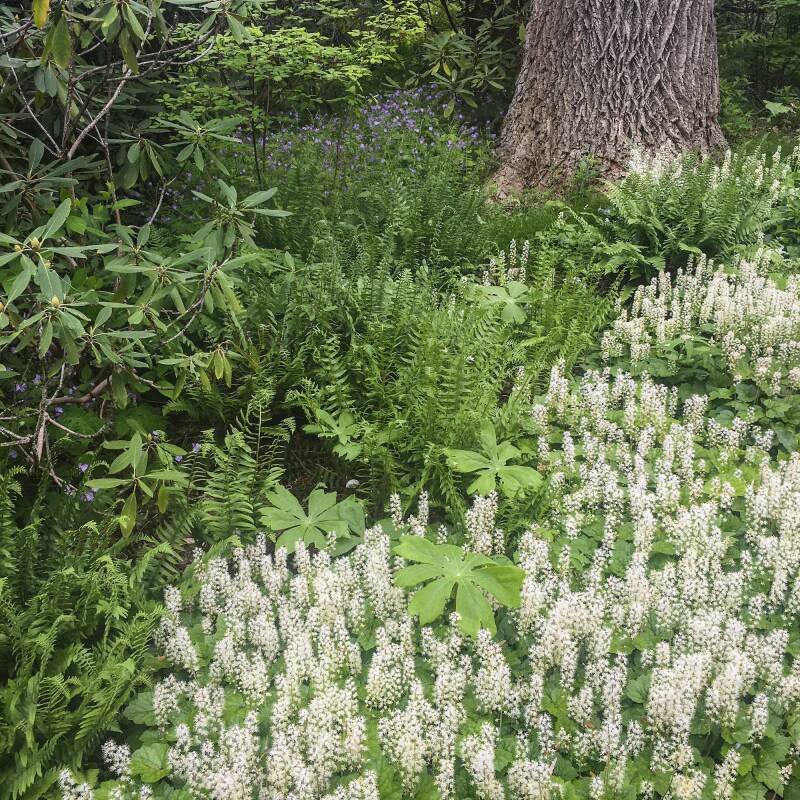Spring is my all-time favorite season. (Sorry, winter, summer, and fall—the heart wants what it wants.) I love everything about it—those first shoots that poke out of the soil, the mellifluous bird songs, the emerging insects, the flowering trees, and, yes, even gardening chores. But I’ve realized that some of those gardening “best practices” I used to espouse were actually not so “best.”
Recently I started working with Perfect Earth Project, a nonprofit founded by Edwina von Gal dedicated to promoting nature-based, toxic-free land care for the health of people, pets, and the planet. Toshi Yano, the organization’s managing director of earth equity and resident horticultural expert, took some time to talk with me about what we can do in our gardens this spring to help them become beautiful, thriving eco-systems that benefit all creatures great and small.
Photography by Toshi Yano, unless otherwise noted.
Q: When should I start my spring cleanup?

A: Leave leaves and debris until the temperature remains above 50 degrees Fahrenheit for five days. When you do start your clean up, skip the leaf blower. There are important pollinators crawling around in the leaf litter that you could blow away if you use one (not to mention all the noise and air pollution produced from gas-powered ones). If you’re compelled to clear space, use a rake. It’s often just as fast, and you can rake the leaves into beds or under your trees and shrubs to use as mulch.
If you’ve left your plant stems up through winter to provide nesting habitat for bees and other insects, now is the time to start cutting them back. A good rule of thumb is to cut stems back to about one and two feet tall. I use hedge shears to do it, and I just leave the stems in the bed. They’ll decompose soon enough, adding organic matter to your beds. And you won’t see them for long, your other plants will grow over them quickly.
Q: What should I do with my lawn?

A: Kill it! No, just joking!! But maybe reduce it? Figure out what part of your lawn you actually use and enjoy, and start to remove the rest. Plant a garden there instead. It’s a great spring project. I know we all love our lawns, but they’re a huge resource sink. Think of all the time, water, chemicals—and money!—we put into their maintenance. We like to think of them as our tidy little squares of nature, but they don’t benefit birds or bees or butterflies the way a diverse native garden can.
That said, there’s a better way to care for the lawns we do keep. Like all living things, lawns want to be nurtured. One of the best ways to nurture a lawn is to let it grow a bit more. Mow higher and less often. When we mow our grass, it responds by using the resources it has stored in its roots to push more green growth, which weakens the root system. Also, make sure the grass is dry before you mow. Cutting wet grass can cause diseases.
Another way to nurture our lawns is to water them more effectively. We tend to irrigate them haphazardly, either over-watering, which leads to fungal problems, or under-watering, which causes stress. Or we set the sprinkler system to a timer and forget it. The water comes on regardless of whether our lawns need it or not. In the spring, in most places, we don’t need to water so much. If you’re getting an inch of rain a week, you should be set.

What your lawn might want in the early spring is some overseeding (fall is a great time, too), and if you do overseed, think about diversifying your seed mix. Try adding some low-growing native clovers, they’ll add nitrogen to your soil without the use of fertilizers. Violets are also a great addition. They’re so important to our native pollinators, and I love when they flower, like little jewels strewn across the lawn.
You can also aerate your lawn in spring to de-compact your soil. For small areas, use a broad fork to slice through compacted soil without disturbing its surface. It’s easy and a good workout, too. But you can also get an aerator attachment for your riding mower if doing it by hand seems daunting.
Q: What should I plant this spring?

A: Keystone plants! Those are the plant species that have outsized effects on your local ecosystem: the native oaks, birches, and cherries that are habitat and food for insects, birds, and other wildlife. The National Wildlife Federation has a handy guide here.
One caveat when you’re out buying plants: Ask your nursery whether they treat their plants with pesticides, especially systemic ones or neonicotinoids, and whether their plant sources used them as well. At Perfect Earth Project, we’re building a resource list of pesticide-free nurseries, so if you know of any in your area, please let us know (info@perfectearthproject.org). If a nursery is using those toxic chemicals or the person answering doesn’t know, take your business elsewhere and explain to them why. All of the great wildlife benefits of plants disappear when they’re treated with those chemicals. In fact, they become like landmines in the landscape. One study found that systemic pesticides continued to kill insects for six years after treatment.
Q: Where can I find inspiration?

A: Go for a hike! My daughter and I can’t wait to get out into the woods when the weather warms. I’m always looking at the ground. I love our native spring ephemerals that start poking their heads out of the ground this time of year, flowering before anything else does. My daughter is particularly eagle-eyed when it comes to spotting them. Our native bleeding hearts are so beautiful, not to mention trilliums, trout lilies, jack-in-the-pulpits, skunk cabbage, I could go on. I also love the ferns, particularly ostrich ferns and their edible fiddleheads.

Also visit your local public gardens to learn more about what they’re doing to improve their local ecosystems and their communities. At Perfect Earth Project we’re building a partnership program with public landscapes who are doing the kind of work we support. We’re hoping to launch in the coming months, so stay tuned. Initially, our focus will be in the Northeast and mid-Atlantic regions, but we plan to take it nationally as soon as we can. Sign up here to subscribe to our newsletter for more about toxic-free gardening tips.
You might also be interested in:
- The Garden Decoder: What Is a ‘Keystone Plant’?
- Ask the Expert: Edwina von Gal, on How to Have a Healthy, Toxic-Free Lawn
- Fields of Green: 5 Favorite Lawn Substitutes













Have a Question or Comment About This Post?
Join the conversation (0)